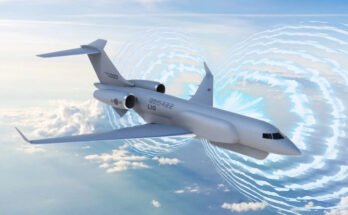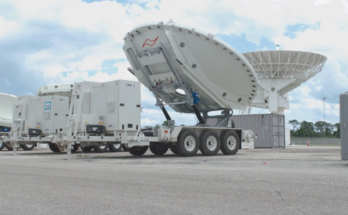by Richard Sterk, Electronic Systems Analyst, Forecast International.
Defense electronics spending continues to emphasize the development of new technologies, but tight budgets are still restricting R&D. Militaries are having a difficult enough time getting funding for required items, much less for “pipedream” acquisitions based on advanced concept development – no one is willing to risk the limited money available to flesh out a new and unproven idea.
C4ISR, specifically communications and networking systems, once again is a primary focus of the overall defense electronics market. “Network-centric warfare” remains a market motivator. Given the advances in personal computers, it may not seem like much to link several computers together to form a local area network, but it must be remembered that government systems are slow in the making and tend to stick around for years. Linking 10-, 20-, and even 30-year-old computer systems (many with different operating systems) is not an easy task. Replacing them all at once with more efficient, modern systems would be chaotic, not to mention costly. The driving force behind this market continues to be software.
Also in demand are technology and systems to counter and defeat an unconventional enemy using unconventional weapons such as electronically detonated improvised explosive devices made from commonly available electronics appliances. The emergence of IEDs as the favorite weapon of insurgents and terrorists has resulted in the funneling of some long-neglected funding back into the electronic warfare (EW) segment. Also, “small ticket” items such as electro-optical (EO) night vision and thermal imaging weapon sights have leapt into production because they have been shown to offer an edge on the battlefield.
Furthermore, homeland security concerns quietly continue to impact the market, with chemical, biological, radiological, and nuclear (CBRN) detection systems among the more notable items being procured. Unfortunately, homeland security remains ill-defined in the U.S., with funding for equipment (at least on the civilian side) mostly coming from the U.S. Department of Homeland Security and the U.S. Department of Transportation. Therefore, it is extremely difficult to determine the influence of homeland security requirements on the U.S. defense electronics market, as the DHS is not funded in the U.S. DoD budget per se. However, many of the defense electronics companies that supply the DoD also have the capability to address homeland security requirements and are showing signs of growth within that market.
Forecast International’s “The Market for U.S. Defense Electronics” forecasts that the 500+ leading programs reviewed in the study will be worth at least $134.729 billion from 2016-2025. While overall U.S. defense spending may be down, the U.S. defense electronics market is showing signs of strength and growth, with only a 24.02 percent ($3.615 billion) drop in projected market value (based on the study’s sampling) over the forecast period, from a start of $14.764 billion in 2016 to a low of $11.216 billion in 2025. This means less than a quarter (24.02 percent) of the programs sampled will be ending over the course of the forecast period, while nearly three-quarters (75.98 percent) will still be active.
This drop is an indicator of two developments: first, the economic free-fall is truly over (the 10-year drop was forecast to be 24.69 percent for 2015-2024; 27.31 percent for 2014-2023; 39.73 percent for 2013-2022; 50.23 percent for 2012-2021; and 56.77 percent for 2011-2020); and second, defense issues themselves, rather than economic conditions, are now the reason for steadily decreasing defense budgets.
The top five defense electronics companies in the U.S. market continue to draw from the upper tier of corporate America. Based on the results of this sampling, the top five are, in order, Northrop Grumman, Lockheed Martin, Raytheon, General Dynamics, and BAE Systems.
Programs forecast to shine during the next 10 years include the APG-81 AESA radar for F-35 aircraft, which is forecast to be worth more than $6 billion alone over the next 10 years; the ICNIA (Integrated Communications, Navigation, Identification, Avionics) system that will integrate aircraft avionics for the F-22 and the F-35 Joint Strike Fighter; the APG-68 pulse-Doppler fire control radar for the F-16; the AAQ-33 Sniper advanced targeting pod; the ALQ-210 situational awareness and threat warning system; the VUIT-2 video system; the SPY-6 Air and Missile Defense Radar (AMDR) to be installed aboard aircraft carriers and destroyers; the AQS-20 minehunting sonar and AQS-22 ALFS (Airborne Low Frequency Sonar) naval systems; the Navy Multi-band Terminal C4I system; the Bowman radio; and the Warfighter Information Network-Tactical (WIN-T).
Please feel free to use this content with Forecast International and analyst attributions, along with a link to the article. Contact Ray Peterson at +1 (203) 426-0800 or via email at ray.peterson@forecast1.com for additional analysis.
FI’s eight Electronic Systems Market Intelligence Services cover the full range of defense-related systems and programs in the radar, communications, electro-optical, and electronic warfare markets, presenting a comprehensive market outlook for current equipment as well as new systems being developed as the modern battlefield moves toward a technology-based warfare approach with network-centric capabilities.
For 50 years, Forecast International intelligence reports have been the aerospace and defense industry standard for accurate research, analysis, and projections. Our experienced analysts compile, evaluate, and present accurate data for decision makers. FI's market research reports offer concise analysis of individual programs and identify market opportunities. Each report includes a program overview, detailed statistics, recent developments and a competitive analysis, culminating in production forecasts spanning 10 or 15 years. Let our market intelligence reports be a key part of reducing uncertainties and mastering your specific market and its growth potential. Find out more at www.forecastinternational.com




